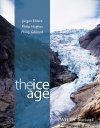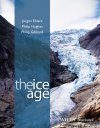By: Jürgen Ehlers(Author), Philip Hughes(Author), Philip L Gibbard(Author)
548 pages, colour & b/w photos, colour & b/w illustrations, colour maps, colour tables
![The Ice Age The Ice Age]()
Click to have a closer look
About this book
Contents
Customer reviews
Biography
Related titles
About this book
The Ice Age provides a new look at the climatic history of the last 2.6 million years during the ice age, a time of extreme climatic fluctuations that have not yet ended. This period also coincides with important phases of human development from Neanderthals to modern humans, both of whom existed side by side during the last cold stage of the ice age. The ice age has seen dramatic expansions of glaciers and ice sheets, although this has been interspersed with relatively short warmer intervals like the one we live in today.
The Ice Age focuses on the changing state of these glaciers and the effects of associated climate changes on a wide variety of environments (including mountains, rivers, deserts, oceans and seas) and also plants and animals. For example, at times the Sahara was green and colonized by humans, and Lake Chad covered 350,000 km2, larger than the United Kingdom. What happened during the ice age can only be reconstructed from the traces that are left in the ground. The work of the geoscientist is similar to that of a detective who has to reconstruct the sequence of events from circumstantial evidence. The Ice Age draws on the specialisms and experience of the authors who are experts on the glacial history of the Earth.
Contents
Preface
1. Introduction
2. The course of the Ice Age
3 Ice and water
4 Till and moraines - the traces of glaciers
5 Meltwater: from moulins to the urstromtal
6 Maps - where are we here?
7 Extent of the Glaciers
8 Ice in the ground - the periglacial areas
9 Hippos in the Thames - the warm stages
10 The course of deglaciation
11 Wind, sand and stones - the aeolian processes
12 What happened to the Rivers?
13 North and Baltic Sea during the Ice Age
14 Climate models and reconstructions
15 Humans interfere
References
Index
Customer Reviews
Biography
Jürgen Ehlers studied Geography at the University of Hamburg. In 1978 he did his PhD with a study in glacial geomorphology. Since then Ehlers worked at the Geological Survey of Hamburg, where he was in charge of the geological mapping until his retirement in 2013. He organised the INQUA project Extent and Chronology of Quaternary Glaciations with both Phil Gibbard and Phil Hughes and this global compilation was published in 2011.
Philip Hughes is Reader in Physical Geography at The University of Manchester, UK. He studied for his first degree reading geography at the University of Exeter graduating in 1999. This was followed by a Masters in Quaternary Science, then a PhD in Geography, both at the University of Cambridge (Darwin College). He is Subject Editor in Geomorphology and Quaternary Geology for the Journal of the Geological Society.
Philip Gibbard is Professor of Quaternary Palaeoenvironments at the University of Cambridge, UK, and a Dosent in the University of Helsinki, Finland. He is past-chair of the International Commission on Stratigraphy's Quaternary Subcommission. He is currently President, and was formally Secretary and member, of the Stratigraphy and Geochronology Commission of INQUA, and is a member of the INQUA Subcommission of European Quaternary Stratigraphy and the Geological Society of London's Stratigraphy Commission. His research is focused on Quaternary and late Tertiary terrestrial and shallow marine sedimentation, stratigraphy and palaeoenvironmental evolution throughout Europe, but he has also worked in the Arctic, North America, India and South-East Asia.
By: Jürgen Ehlers(Author), Philip Hughes(Author), Philip L Gibbard(Author)
548 pages, colour & b/w photos, colour & b/w illustrations, colour maps, colour tables




































